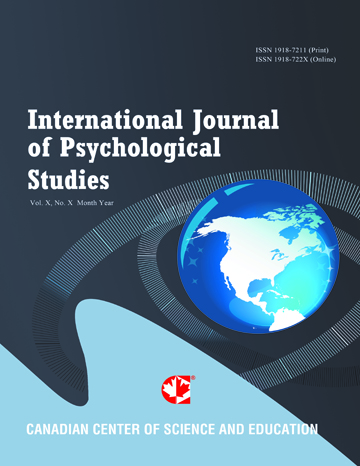Test Anxiety and Its Relationship to Self-Esteem During the COVID-19 Pandemic
- Nawal Hamid Mohammed Hamid
Abstract
This research aimed to investigate the level of test anxiety and the relationship between test anxiety and self-esteem among the students of the faculty of Science and Arts in Rafha campus, Northern Border University, KSA during the COVID-19 pandemic. In addition, it intended to identify the differences in test anxiety among the students according to gender variable. The researcher applied the descriptive method, prepared a preliminary data form, and used the Westside Test Anxiety Scale by Driscoll (2007) and the Self-esteem Scale by El Sayed (2019). The data were collected online, and the sample size was (336) students. The results showed that the level of test anxiety among the students of the faculty of Science and Arts during the COVID-19 pandemic was high. The correlation coefficient between the impairment subscale and self-esteem was negative but statistically insignificant. Moreover, the correlation coefficients between both the worry subscale and the test anxiety total scores with the self-esteem resulted in a negative sign and statistically significant. There were significant differences in test anxiety among the students in the impairment subscale, the P-value was (0.005), which indicates that the difference between the two means is statistically significant, and the males’ mean is greater. While the P-value for the worry subscale was (0.226), which indicates that the difference was insignificant, the P-value of the test anxiety total scores was (0.029), which reveals that the difference between the two means is statistically significant, and the males’ mean is greater.
- Full Text:
 PDF
PDF
- DOI:10.5539/ijps.v13n4p15
Journal Metrics
1. Citations (March 2025): 10975
3. i10-index (March 2025): 233
For details about the Journal Metrics, please visit the Google Scholar website.
Index
- AcademicKeys
- CNKI Scholar
- Elektronische Zeitschriftenbibliothek (EZB)
- Excellence in Research for Australia (ERA)
- GETIT@YALE (Yale University Library)
- Harvard Library E-Journals
- JournalSeek
- JournalTOCs
- LOCKSS
- MIAR
- Open Access Journals Search Engine(OAJSE)
- Open J-Gate
- PKP Open Archives Harvester
- SHERPA/RoMEO
- Standard Periodical Directory
- The Keepers Registry
- UCR Library
- Ulrich's
- Universe Digital Library
- WorldCat
Contact
- Barbara SunEditorial Assistant
- ijps@ccsenet.org
